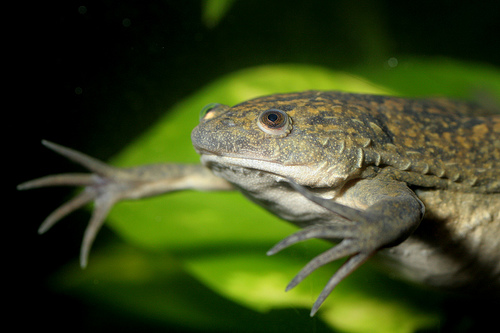Batrachochytrium dendrobatidis is a species of chytrid fungus discovered in 1999. Its notoriety stems from its apparent capability of infecting most of the world’s approximately 6,000 amphibian species. Species that are infected go on to develop chytridiomycosis, a disease that is thought to be the cause of major amphibian population declines and extinctions.
Chytridiomycosis affects the keratin in the skin of the amphibians causing it to become much thicker. This has serious implications for all amphibians who "drink" water and absorb vital salts through their skin. The resulting electolytic imbalance can lead to heart problems and death. Those amphibians, like certain salamanders, that rely on their skin to breathe begin to be suffocated.
Some amphibians display a natural resistance to the effects of Batrachochytrium dendrobatidis. The include American bullfrogs

and African clawed frogs.

Extensive scientific research is underway to understand the reason for this resistance in the hope that it can provide a way of protecting non-resistant species.
For more details, including what you can do to help protect amphibians against the spread of chytrid fungus as well as other threats to their existence, hop on over to AArk, the Amphibian Ark.
